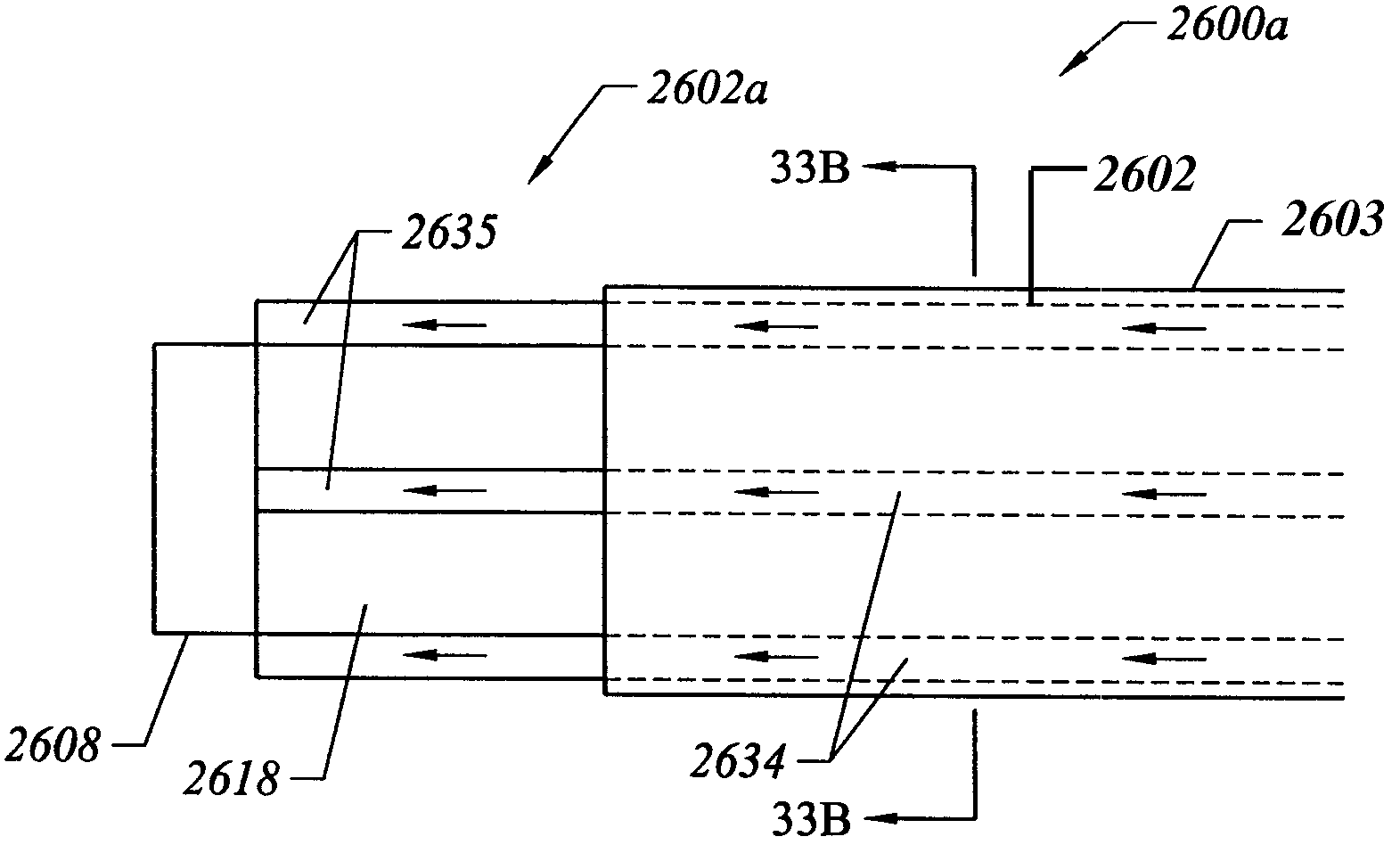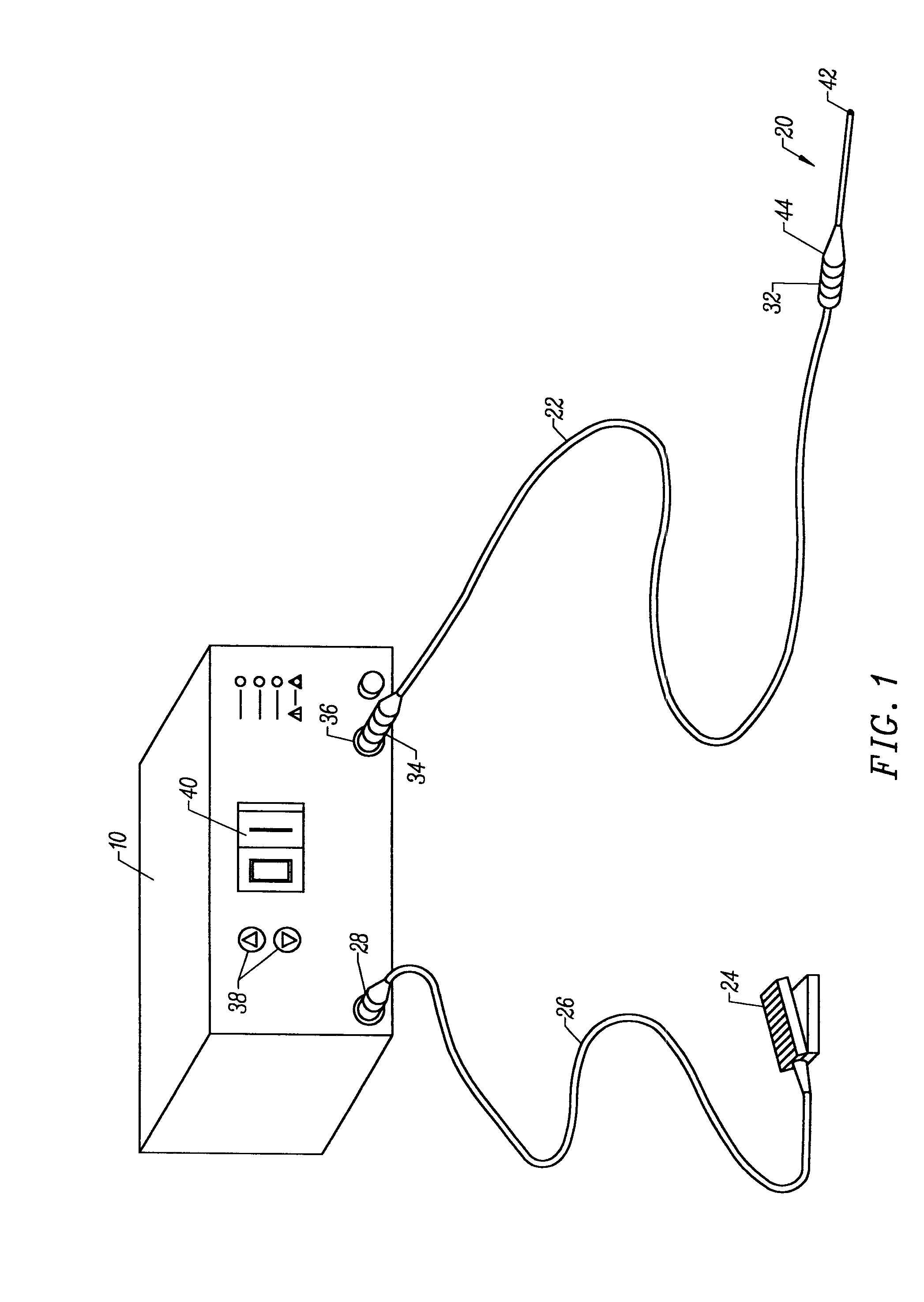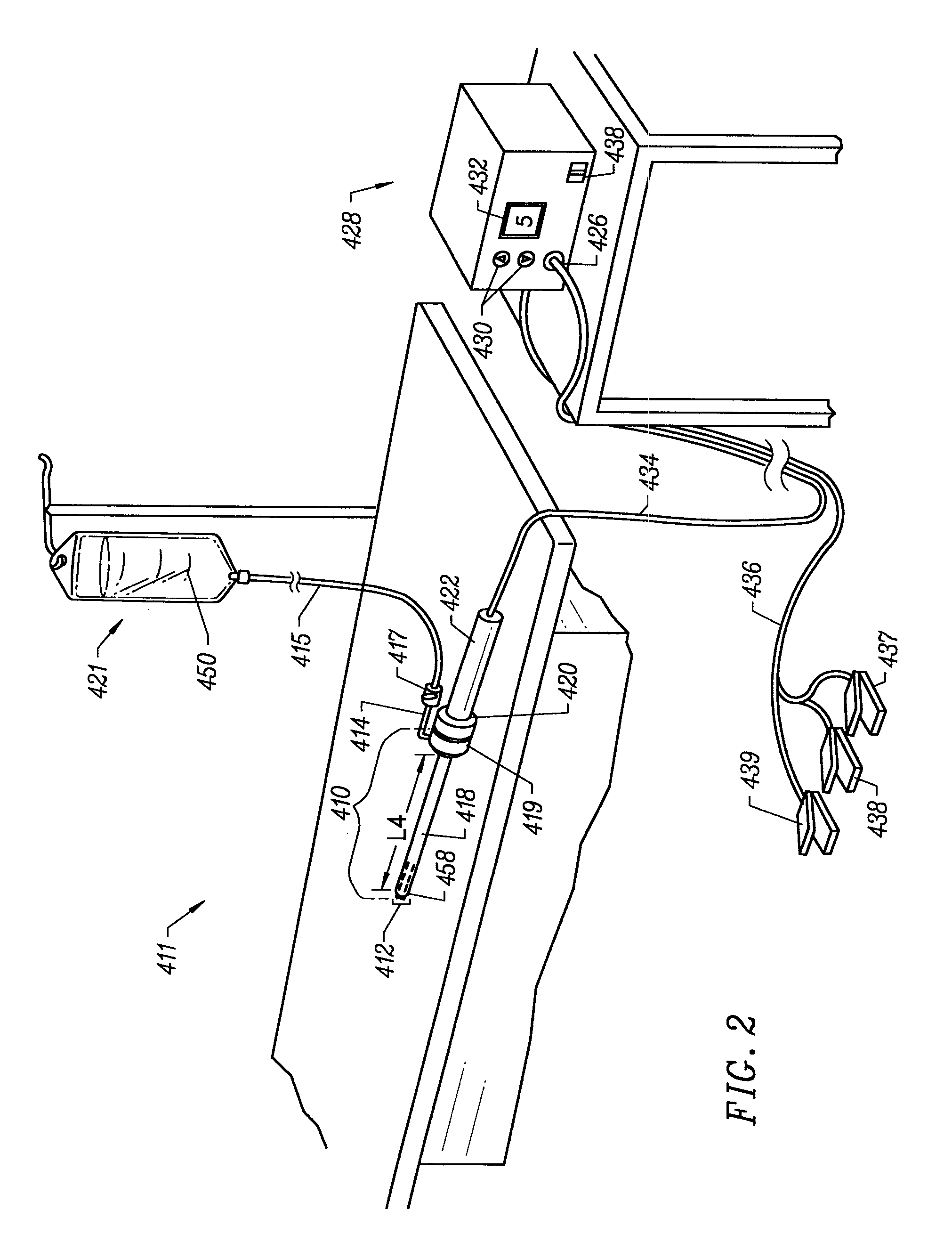Electrosurgical apparatus and methods for laparoscopy
a technology of electrosurgical equipment and laparoscopy, applied in the field of electrosurgical equipment and methods for laparoscopy, can solve the problems of tissue desiccation or destruction at the contact point of the patient's tissue, damage or destruction of the tissue, and suffers from electrosurgical devices and procedures, etc., to achieve the effect of promoting more aggressive plasma generation and avoiding or minimizing current shorting
- Summary
- Abstract
- Description
- Claims
- Application Information
AI Technical Summary
Benefits of technology
Problems solved by technology
Method used
Image
Examples
Embodiment Construction
[0084]The present invention provides systems and methods for selectively applying electrical energy to a target location within or on a patient's body. The present invention is particularly useful in laparoscopic procedures, such as procedures for the treatment of endometriosis, and in laparoscopic oncology. In addition, tissues which may be treated by the system and method of the present invention include, but are not limited to, prostate tissue and leiomyomas (fibroids) located within the uterus, gingival tissues and mucosal tissues located in the mouth, tumors, scar tissue, myocardial tissue, collagenous tissue within the eye or epidermal and dermal tissues on the surface of the skin. Other procedures for which the present invention may be used include arthroscopic procedures, laminectomy / diskectomy procedures for treating herniated disks, decompressive laminectomy for stenosis in the lumbosacral and cervical spine, posterior lumbosacral and cervical spine fusions, treatment of s...
PUM
 Login to View More
Login to View More Abstract
Description
Claims
Application Information
 Login to View More
Login to View More - R&D
- Intellectual Property
- Life Sciences
- Materials
- Tech Scout
- Unparalleled Data Quality
- Higher Quality Content
- 60% Fewer Hallucinations
Browse by: Latest US Patents, China's latest patents, Technical Efficacy Thesaurus, Application Domain, Technology Topic, Popular Technical Reports.
© 2025 PatSnap. All rights reserved.Legal|Privacy policy|Modern Slavery Act Transparency Statement|Sitemap|About US| Contact US: help@patsnap.com



